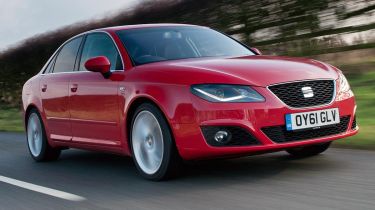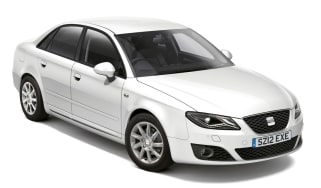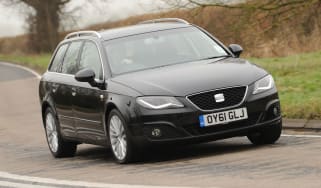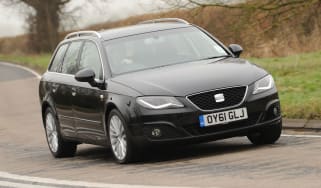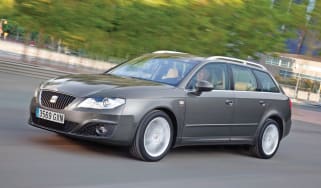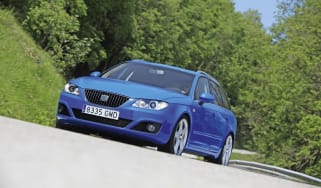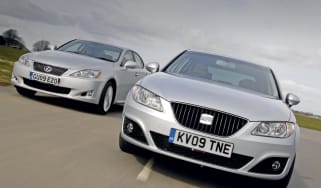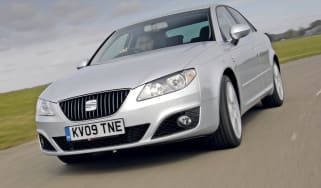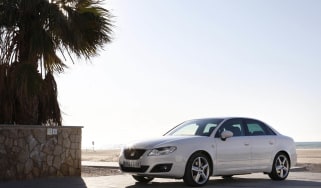SEAT Exeo (2008-2013) review
The SEAT Exeo is based on the previous generation Audi A4, and is a quick way for SEAT to get a high quality family saloon in its range

If you own a B7-generation Audi A4, you'll find the SEAT Exeo very familiar. Both inside and out, the mid-sized SEAT is identical to the car it's based on. The styling is conservative but appealing and there is an air of quality not always associated with the Spanish car maker. From behind the wheel, the Exeo feels solid and dependable – but is a little off the pace compared to the dynamic Ford Mondeo. However, given that SEAT is essentially marketing a car that was four-years old even when it was first launched, it stands up well to more contemporary competition.
Engines, performance and drive
The SEAT Exeo comes with four engine choices, a 2.0-litre TFSI turbo petrol and a 2.0-litre TDI diesel in three states of tune. The lower powered 118bhp engines is sluggish, and pulling power between 50-70mph is quite disappointing. However, the 141bhp version has bags more torque and feels far more capable – reducing the Exeo’s 0-62mph time from 10.5 seconds to 9.2 seconds – three tenths faster than a Skoda Octavia 2.0 TDI. On the road the Exeo feels solid and refined, although the handling isn't as good as the latest Audi A4. Sport models are decidedly firm and are best avoided over the softer, but equally capable SE variant.
MPG, CO2 and Running Costs
The SEAT Exeo is rather off the pace when it comes to efficiency and running costs. The 141bhp 2.0 TDI does 58.9mpg, whereas the similarly priced Renault Megane manages an impressive 70.6mpg from its 128bhp dCi engine. The Renault is particularly efficient partly thanks to an effective stop/start system – something that won’t be available on the Exeo until the introduction of the Ecomotive version. Standard kit is good – Bluetooth and air-con are standard across the range.
Interior, design and technology
At first glance, it's obvious that the SEAT Exeo is based on the B7-generation Audi A4. The proportions are exactly the same, but SEAT has given the exterior a fresh face, with a front end similar to a SEAT Ibiza's. At the rear it gets a new set of light clusters, and the number plate has been moved from the bootlid to the bumper. Inside, the interior is a mishmash of VW and Audi parts, although SEAT does fit the dashboard from the A4 Convertible to give it a more upmarket feel.
Practicality, comfort and boot space
The fact the SEAT Exeo is based on an old A4 has its advantages, but practicality isn’t one of them. Space in the rear feels tight, with poorer leg and headroom than in a Skoda Octavia – step inside a Ford Mondeo and you’ll be positively spoilt for room. The 460-litre boot is generous for a saloon, but some way off more practical hatchback rivals like the Octavia, which boasts an impressive 585 litres. Cabin storage is adequate but not overwhelming, with a number of small storage areas for things like your mobile phone and mp3 player.
Reliability and Safety
As the Exeo is based on an old design, it only manages four stars in the Euro NCAP crash tests, and while it may look weak next to the five star Renault Megane and Ford Mondeo, it is still a very safe car. The brakes don’t have the same bite as the Megane and there is more body roll than in the Mondeo but the Exeo holds the road well and the steering is sharp. Given Audi’s impressive build quality, there is no reason to think the Exeo should be anything but spot on, although SEAT did place a disappointing 24th in the 2012 Driver Power survey, compared to Audi in 15th.
